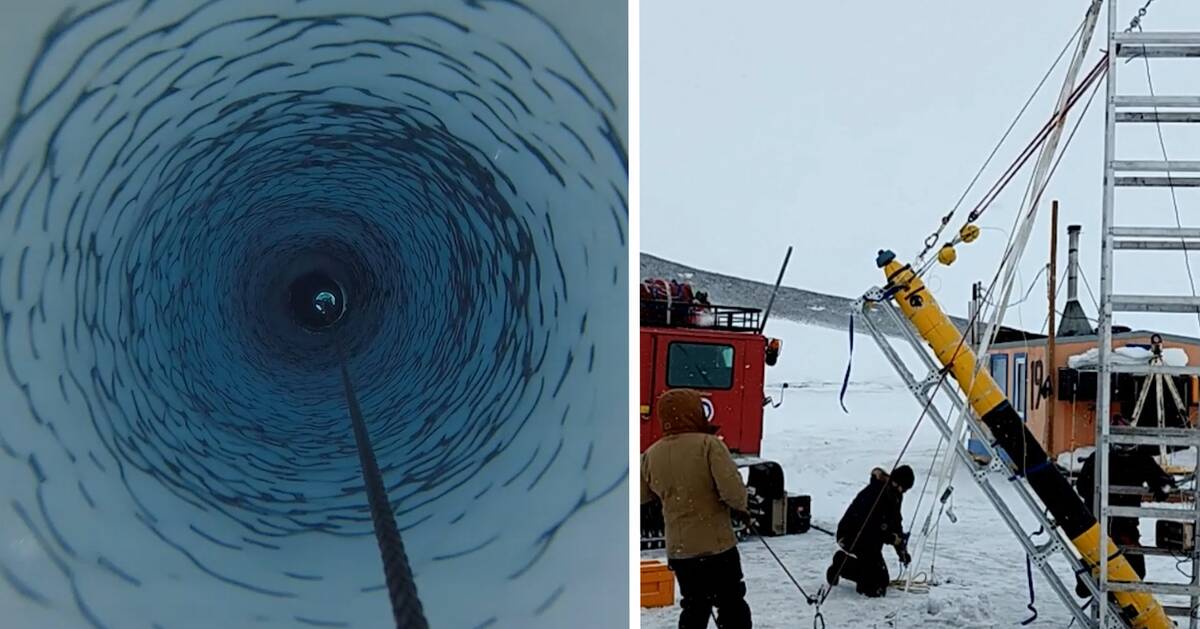A specially designed robot with both a camera and measuring equipment was sent down into the hole to find out what really happens deep below the liquid part of the glacier, at the so-called grounding zone.
- This key area is the holy grail of the glacier.
This is where the glacier has the highest melting rate.
And for the first time we are allowed to look into the black box, says Anna Wåhlin, professor of oceanography at the University of Gothenburg.
At the so-called grounding zone, the glacier, the seabed and the sea meet.
Photo: Davies et al, Nature
As big as Norrland
The Thwaites Glacier is as big as Norrland on the surface and has long been monitored by scientists.
It is one of the fastest changing glaciers in Antarctica and is sometimes called the Doomsday Glacier.
If it were to collapse, the meltwater could cause a global sea level rise of half a meter.
In addition, such an event risks upsetting surrounding glaciers with further sea level rise as a result.
Helps to plan the cities of the future
The robot measured water temperature, currents and ice melting at the previously unexplored grounding zone, and the results of the measurements were presented in the journal Nature.
The study can now help improve scientific models of the meltdown.
- If you have better models, you can better predict future water levels and plan urban development accordingly, says Anna Wåhlin.
Climate change is not the only factor
The Thwaites Glacier has retreated 14 kilometers since the 1990s when measurements began.
But it is not only climate change, caused by humans, that leads to melting, says Anna Wåhlin.
- Above all, it is a natural melting due to the fact that we no longer have an ice age.
Now the ice is probably melting at a faster rate because we are affecting our climate,

